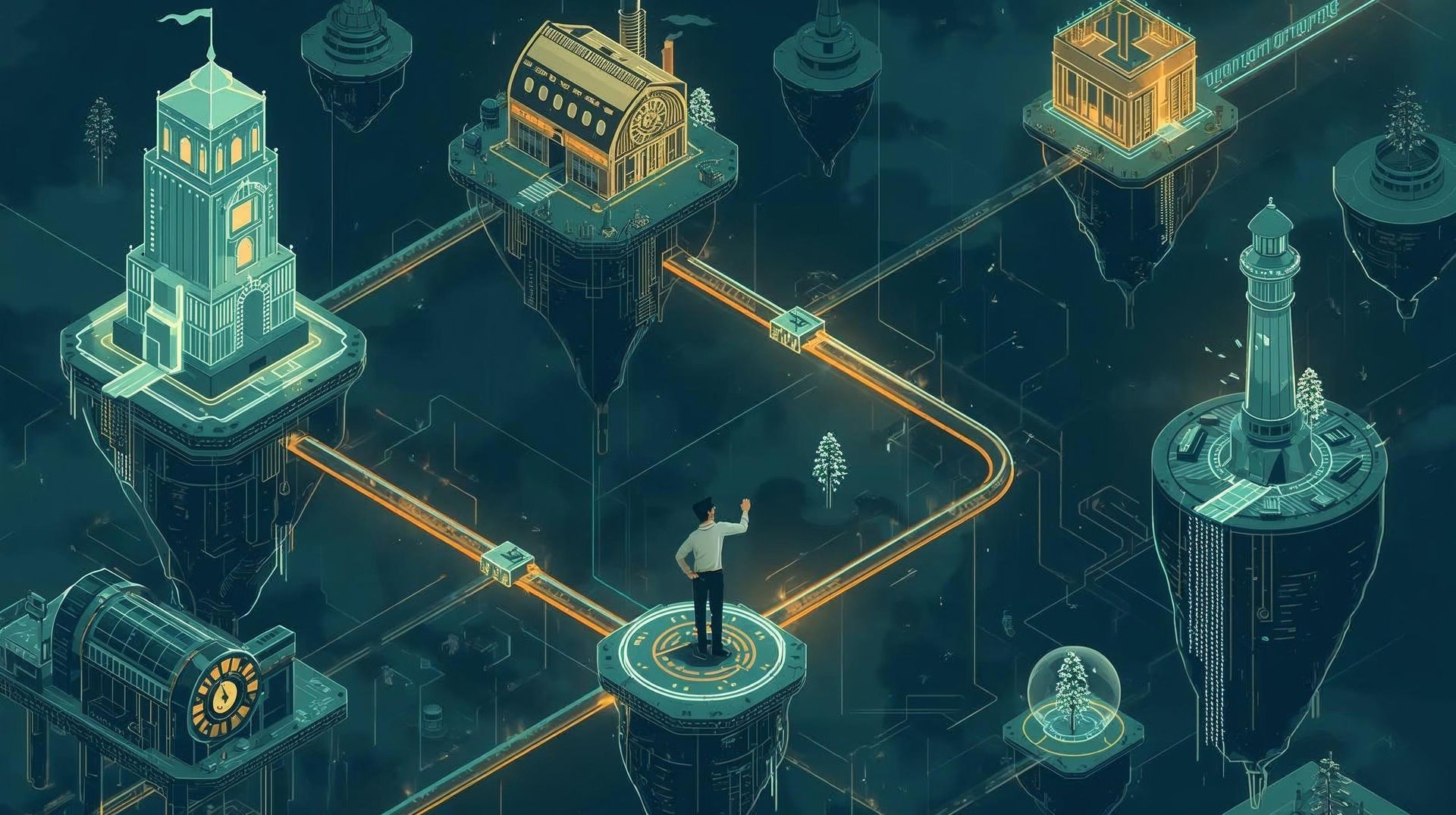Keeping the Human Touch in an Automated Business
In today's rapidly evolving digital landscape, businesses face a pivotal challenge: how to scale operations efficiently with artificial intelligence while preserving the personal connections that valuable clients expect and deserve. As someone who has navigated this balance with clients across multiple industries, I've witnessed firsthand both the tremendous potential of AI and the irreplaceable value of human connection.
The Automation Paradox
The promise of AI is compelling - increased efficiency, reduced costs, and the ability to scale operations without proportionally scaling staff. Yet the most successful businesses understand that technological efficiency and human connection aren't opposing forces but complementary strengths when deployed strategically.
Consider this paradox: The more we automate routine interactions, the more valuable authentic human touchpoints become. This is especially true for high-ticket clients who aren't just purchasing a product or service - they're investing in a relationship built on trust, understanding, and personalized attention.
Where AI Enhances Without Replacing
The key lies in recognizing where technology amplifies human capabilities rather than substituting for them. Here's where AI truly shines without diminishing personal connection:
1. Data-Driven Personalization
AI excels at processing vast amounts of client data to identify patterns and preferences that might escape even the most attentive account manager. When my team implemented predictive analytics to anticipate client needs, we discovered something remarkable: our personal conversations became more meaningful, not less.
Our account managers arrived at meetings already informed about potential concerns and opportunities, allowing them to focus on deeper, more valuable discussions rather than fact-finding. Clients consistently reported feeling "truly understood" in feedback surveys - precisely because our human team could leverage AI insights to have more relevant, personalized conversations.
2. Administrative Liberation
Nothing erodes the quality of client relationships faster than having your expert talent buried in administrative tasks. By automating routine processes like scheduling, basic reporting, and initial information gathering, we freed our specialists to do what they do best: provide thoughtful, creative solutions to complex client challenges.
One client recently told me, "I used to feel like I was taking up your team's time with basic requests. Now, I get immediate responses to simple needs through your platform, but I still have deep strategy conversations with real people who aren't rushed or distracted."
3. Consistent Client Experience
AI-driven systems ensure that no client interaction falls through the cracks. From automated follow-ups to milestone reminders, these systems create a consistent foundation of communication that human team members can build upon with more meaningful engagement.
Where Human Trust Remains the Deciding Factor
Despite remarkable advances in technology, certain aspects of client relationships remain fundamentally human. These are the areas where maintaining the personal touch is necessary for business success:
1. Strategic Decision-Making
Morgan Stanley introduced generative AI technologies, such as the Morgan Stanley Assistant and Debrief, to help advisors retrieve insights from internal documents and summarize client meetings. However, they observed that client adoption remained tepid when these tools were perceived as standalone solutions.
To address this, Morgan Stanley repositioned the AI tools as enhancements to their advisors' capabilities rather than replacements.By emphasizing that these tools were designed to augment human judgment and streamline complex tasks, the firm fostered greater acceptance among clients.This strategic shift underscored the importance of framing AI as a collaborative asset in the advisor-client relationship, leading to improved adoption rates and more efficient service delivery. (Source)
2. Emotional Intelligence
During challenging project phases or difficult conversations, AI simply cannot replicate the emotional intelligence of an experienced professional who can read between the lines, acknowledge unspoken concerns, and navigate complex interpersonal dynamics.
When a client is facing a crisis that requires immediate attention, it is a team's empathetic response, the late-night call, the reassurance in their voice and the willingness to drop everything that will cement a client's loyalty. Years later, the client will remember that moment as a reason why they continue to do business with a company despite competitive offers from others.
3. Creative Problem-Solving
When clients face novel challenges that don't fit established patterns, human creativity and lateral thinking become invaluable. AI can help identify similar historical situations, but the innovative synthesis of ideas that leads to breakthrough solutions remains a distinctly human capability.
Finding the Balance: Practical Strategies
So how do you maintain authenticity and personal connection while scaling with AI? Here are strategies that have proven effective across multiple industries:
1. Design Your Customer Journey Map with Intentional Human Touchpoints
Critically analyze your client journey and deliberately designate which touchpoints require human interaction and which can be effectively automated. The key word here is "effectively" - automation should enhance, not diminish, the client experience.
Consider implementing mandatory human check-ins with clients at critical decision points, while using AI to handle routine updates and information delivery between these milestone conversations.
2. Be Transparent About AI Usage
Clients appreciate honesty about when they're interacting with automated systems versus human team members. Rather than trying to make AI pass as human (which often creates an "uncanny valley" effect that damages trust), clearly communicate which aspects of your service are technology-driven and which are handled by your team.
This transparency builds trust and sets appropriate expectations. You could say something like: "Our AI system will handle your routine reporting needs and flag potential issues, but your dedicated advisor reviews everything and is always available for strategic discussions."
3. Use AI to Enhance Human Preparation
Before important client meetings, leverage AI to compile relevant information, suggest discussion points, and identify potential concerns based on recent interactions or data patterns. This ensures your human team enters every conversation well-prepared and focused on the discussion rather than scrambling to gather basic information.
4. Create Personalized "High-Touch" Rituals
Develop signature experiences that demonstrate your commitment to personal attention. These might include quarterly in-person strategy sessions, personalized video messages from leadership at important milestones, or surprise gestures that show deep understanding of your team or client's individual preferences and priorities.
During his tenure, Douglas Conant - former CEO of Campbell Soup Company, made it a practice to send handwritten notes to employees, celebrating their successes and contributions. Over ten years, he penned more than 30,000 notes, despite the company having only 20,000 employees during that time. These personal gestures were often displayed in employee workspaces, signifying their profound impact. Conant believed that such personalized recognition was crucial for employee engagement and fostered a culture of appreciation within the organization. A simple, thoughtful act like sending handwritten notes can significantly enhance relationships and demonstrate genuine appreciation, making clients and team members feel truly valued. (Source)
5. Train Your Team on AI Collaboration
Ensure your client-facing staff understands how to effectively partner with AI tools. The most successful teams view technology as an amplifier of their expertise rather than a threat to their role. This mindset shift is critical - when your team embraces AI as a partner that handles routine tasks while elevating their ability to provide strategic value, clients benefit from both technological efficiency and enhanced human expertise.
The Future Belongs to the Blended Approach
The businesses that will thrive in this new landscape aren't those that choose between technology and human connection, but those that thoughtfully integrate both. AI handles what AI does best - processing vast amounts of data, generating insights, and managing routine interactions with consistency and efficiency. Meanwhile, your human talent focuses on what humans do best - building relationships, demonstrating empathy, applying judgment, and creating innovative solutions.
This complementary approach doesn't just maintain the personal touch - it enhances it. By liberating your team from administrative burdens and equipping them with deeper insights, you enable them to provide a level of personalized service that would be impossible without technological support.
In the end, your clients don't want to choose between efficiency and personal attention - they want both. The businesses that deliver this blended experience, leveraging AI to enhance rather than replace meaningful human connection, will earn not just their clients' business but their enduring loyalty in an increasingly automated world.
What steps is your business taking to maintain the human touch while scaling with AI? I'd love to hear your experiences in the comments below.
© Virtual Rani 2025. The information contained herein is provided for information purposes only; the contents are not intended to amount to advice and you should not rely on any of the contents herein. We disclaim, to the full extent permissible by law, all liability and responsibility arising from any reliance placed on any of the contents herein.













































































































